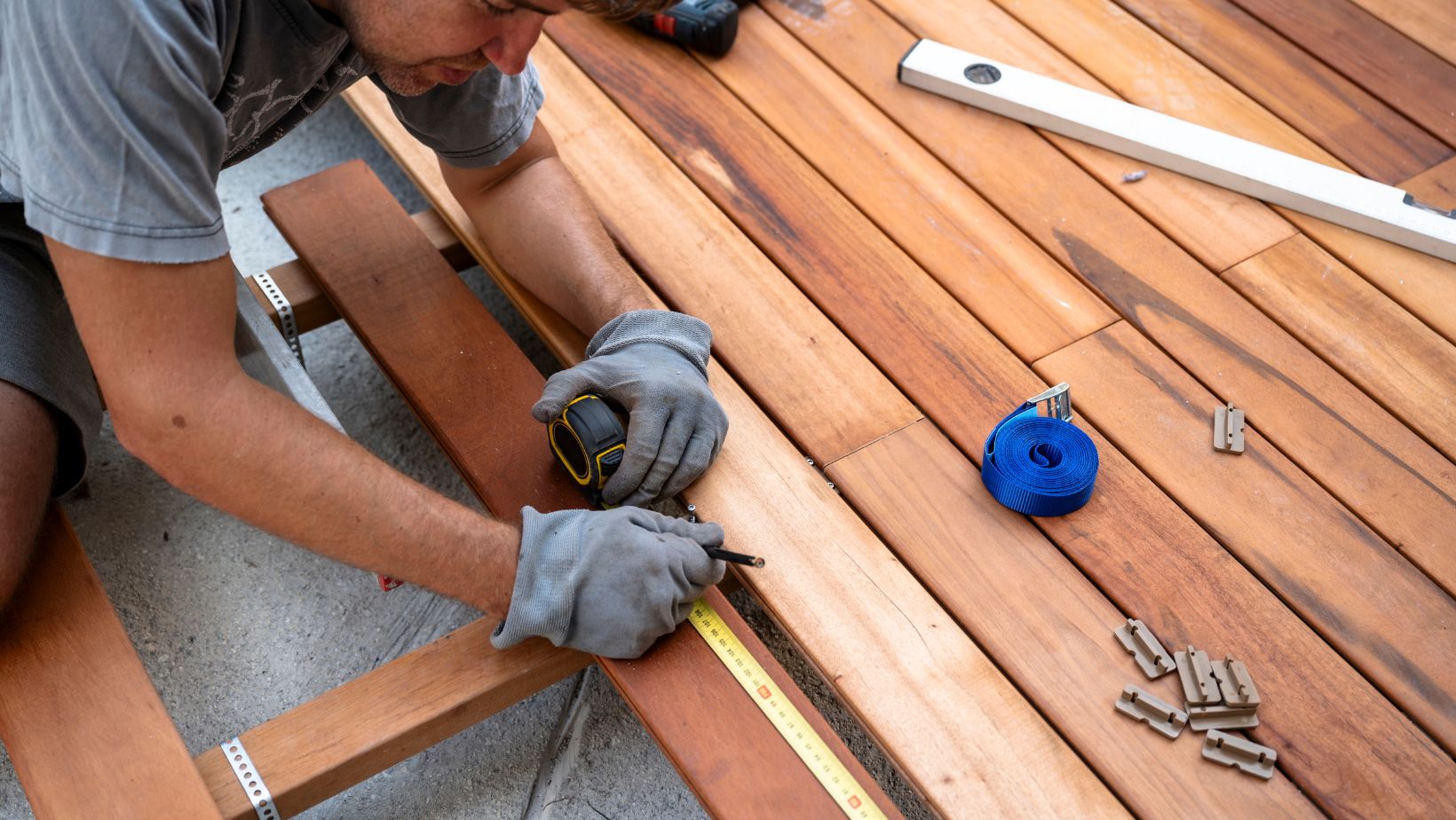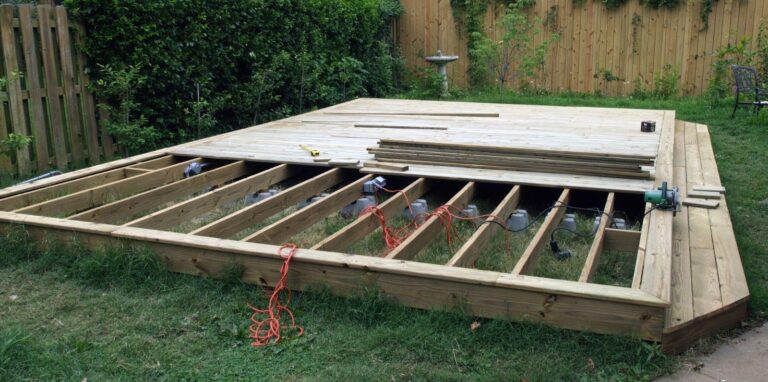Adding a new deck to your home is an exciting upgrade, especially for homeowners in Washington State who want more functional outdoor living space. A deck becomes a place for gatherings, quiet mornings, and enjoying the natural beauty of the Pacific Northwest. But before the first board is installed, one thing matters more than anything else: preparation. Getting your yard ready sets the foundation for a strong, long-lasting deck that performs well through Washington’s wet seasons and changing temperatures.
Preparing your space properly can prevent sagging, shifting, water damage, and unnecessary delays during construction. It also ensures the deck design fits your yard safely and efficiently. Many homeowners find it helpful to consult a trusted local company who specializes in building exceptional decks, especially when they want expert guidance on site conditions or layout. Whether you’re planning a standard layout or a large custom design, good preparation leads to smoother installation and a better final result.
Assessing the Space Where the Deck Will Go
Before any work can begin, you need a clear picture of the area where the deck will be built. The space should be measured carefully so the layout fits your yard, aligns with your home, and meets local code requirements. Accurate measurement also helps determine whether nearby features—like trees, pathways, or fences—will need to be adjusted or worked around.
Homeowners should take time to visualize everything the deck will support, such as furniture, grills, or planters. Having a sense of the deck’s purpose helps identify how much space you truly need. It’s also important to make sure there’s enough room for stairs, supports, and proper drainage. An early walkthrough of the area provides a clear idea of what needs to be moved, cleared, or modified for the installation to begin.
Clearing the Area of Obstacles
Once the location is decided, the next step is clearing the yard. This includes removing any outdoor furniture, storage items, children’s play equipment, and anything else that could block access for building materials or tools. If there are shrubs, plants, or small trees in the way, you’ll need to trim or remove them to create a clear workspace.
Washington homeowners often face another challenge: wet or soft soil. If the ground is muddy or saturated, it may need time to dry, especially after rainfall. Allowing the soil to firm up before work starts prevents the area from becoming damaged by foot traffic, equipment, or post-setting tools. A clear and stable workspace helps installation go smoothly and prevents disruptions during construction.
Checking for Underground Utilities
One of the most important steps—often overlooked by homeowners—is locating underground utilities. Washington State requires property owners to confirm the location of gas lines, water lines, electrical cables, and sewer connections before digging. Since deck footings must be placed deep into the ground, hitting a utility line can be dangerous and extremely costly.
Calling 811 (the local “Call Before You Dig” service) ensures a technician marks your property with accurate locations of any buried utilities. This step must be completed before installation begins. It helps the deck design team know exactly where it’s safe to dig and prevents delays caused by last-minute surprises underground.
Evaluating the Soil and Drainage Conditions
Decks in Washington deal with consistent moisture, especially in Western Washington where rainfall is frequent. Poor drainage can weaken the soil around the deck posts and create long-term structural issues. Before installation, it’s important to evaluate the ground’s ability to drain water properly.
This may involve checking how water moves across your yard after rainfall or testing how quickly the soil absorbs moisture. In some cases, homeowners need to grade the area to prevent water from pooling around the deck structure. Simple grading adjustments can make a big difference in the deck’s long-term durability.

Removing Old Structures or Existing Decks
If an older deck is already in place, it must be removed before the new one can be installed. Removing an old structure involves taking out boards, supports, nails, footings, and any damaged wood. It’s important to clear everything down to a clean, level surface so the new deck can be built on a strong foundation.
During removal, installers can check the condition of the exterior walls, siding, and foundation of your home. If there are hidden problems—such as rot, mold, or water damage—they can be addressed before construction. Many homeowners discover issues behind old decks that would have gone unnoticed if they skipped a thorough demolition.
Creating a Stable and Level Surface
Once the space is cleared, the ground must be leveled to create a stable base for the new deck. Uneven ground causes structural stress and can lead to shifting or improper settling. Leveling may involve removing soil, adding gravel, or compacting the ground to create a firm surface.
Using gravel or compacted stone helps prevent moisture buildup around the deck posts. Since Washington gets heavy rainfall, good drainage beneath the deck is essential. Some yards may require additional steps like installing a French drain or adding soil to redirect water away from the foundation.
A stable and even surface ensures that footings can be set correctly, which directly affects the deck’s safety, longevity, and load-bearing strength.
Creating Access for Construction Teams
Deck installation requires constant movement of materials, tools, and heavy equipment. To keep the process efficient, you need a clear path from the street or driveway to the build site. Move garbage bins, garden items, or outdoor decorations that may block access.
If fences or gates are narrow, you may need to temporarily remove a section so materials can be transported easily. Creating wide, open access points helps the project move faster and reduces the risk of accidental damage to your yard or home.
Preparing Your Home and Surrounding Areas
The area around the deck site should also be protected. This includes covering windows, removing hanging décor, protecting siding, and clearing areas where debris might fall. If you have pets, you should plan where they’ll stay during the installation process. Construction noise, debris, and open yard areas can be unsafe for animals.
Weather preparation is also important. In Washington, sudden rain can delay construction or complicate site preparation. Clearing gutters, redirecting downspouts, and watching the forecast helps avoid surprises once installation starts.
Final Thoughts: Smooth Preparation Leads to a Stronger Deck
A well-prepared yard is the key to building a new deck that lasts for decades. Taking the time to clear the site, level the ground, protect your home, and check utilities ensures the installation process is smooth and efficient. It also helps prevent structural issues caused by soft soil, poor drainage, or unexpected obstacles.
Whether you’re planning a small platform deck or a large elevated space, preparation makes every step easier. With the help of skilled local professionals who understand Washington’s landscape and climate, your project will be well-planned from the ground up, giving you a strong and beautiful deck that enhances your home for years to come.

